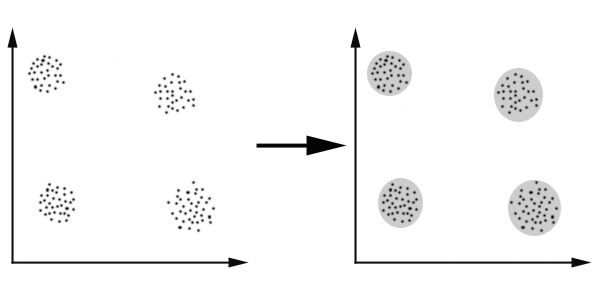
Postgres2015全国用户大会将于11月20至21日在北京丽亭华苑酒店召开。本次大会嘉宾阵容强大,国内顶级PostgreSQL数据库专家将悉数到场,并特邀欧洲、俄罗斯、日本、美国等国家和地区的数据库方面专家助阵:
- Postgres-XC项目的发起人铃木市一(SUZUKI Koichi)
- Postgres-XL的项目发起人Mason Sharp
- pgpool的作者石井达夫(Tatsuo Ishii)
- PG-Strom的作者海外浩平(Kaigai Kohei)
- Greenplum研发总监姚延栋
- 周正中(德哥), PostgreSQL中国用户会创始人之一
- 汪洋,平安科技数据库技术部经理
- ……
|
 |
有时,我们为了直观的显示对象的空间占用及分布情况,我们可能会以图表的形式展示。
通常情况下,我们可以根据需求,以柱状图或者聚集图的形式来展示,从各个维度来了解数据空间占用的分布情况,例如:
1. bucket分布,就是按大小排序,选定要划分为几个bucket,每个bucket放同样数量的对象,输出bucket的边界,形式和pg_stats.histogram_bounds的输出类似。
方法举例,需要用到窗口函数ntile:
postgres=# select bucket,min(size),max(size),count(*) from (select relname,ntile(10) over( order by pg_relation_size(oid) ) bucket, pg_relation_size(oid) size from pg_class) t group by 1 order by 1;bucket | min | max | count--------+-------+----------+-------1 | 0 | 0 | 312 | 0 | 0 | 303 | 0 | 0 | 304 | 0 | 0 | 305 | 0 | 8192 | 306 | 8192 | 8192 | 307 | 8192 | 16384 | 308 | 16384 | 16384 | 309 | 16384 | 32768 | 3010 | 32768 | 36249600 | 30(10 rows)
2. 按等间距线性分布,例如每100MB输出一组落在对应SIZE的对象。这种方式有点像
systemtap的
@hist_linear分布
方法举例:
postgres=# select pg_relation_size(oid)/1024/1024,count(*) from pg_class group by 1 order by 1;?column? | count----------+-------0 | 29921 | 134 | 1(3 rows)
3. 按2^n间距指数分布,
这种方式有点像systemtap的
@hist_log分布
方法举例:
首先要将int转为二进制
create or replace function si32tob(i_num int) returns varbit as $$declareo_bit text;o_len int;i_conv int;i_num_abs int;i_pos int;beginif i_num = 0 then return varbit '0'; end if;o_len := 32;i_conv := 2;i_num_abs := abs(i_num);i_pos := trunc((dlog1(i_num_abs))/0.693147180559945);o_bit := mod(i_num_abs,i_conv)::text;if i_pos >= 1 thenfor i in 1..i_pos loopo_bit := mod(i_num_abs>>i, i_conv)||o_bit;end loop;end if;if i_num >=0 thennull;elseo_len := o_len - char_length(o_bit) - 1;o_bit := repeat('0', o_len)||o_bit;o_bit := '1'||o_bit;end if;return o_bit::varbit;end;$$ language plpgsql;
输出
postgres=# select 2^(bit_length(si32tob((pg_relation_size(oid))::int4))-1), count(*) from pg_class group by 1 order by 1;
?column? | count
----------+-------
1 | 145
8192 | 67
16384 | 60
32768 | 14
65536 | 6
131072 | 4
262144 | 7
524288 | 1
16777216 | 1
33554432 | 1
(10 rows)
4. 聚集分布,可以用k-mean分布插件

查询举例:
postgres=# select class,min(size),max(size),count(*) from (select kmeans(array[pg_relation_size(oid)],10) over() as class,pg_relation_size(oid) size from pg_class ) t group by 1 order by 1;
class | min | max | count
-------+----------+----------+-------
0 | 671744 | 671744 | 1
1 | 483328 | 483328 | 1
2 | 475136 | 475136 | 1
3 | 22487040 | 22487040 | 1
4 | 352256 | 352256 | 1
5 | 36249600 | 36249600 | 1
6 | 278528 | 319488 | 4
7 | 221184 | 221184 | 1
8 | 57344 | 139264 | 10
9 | 0 | 49152 | 285
(10 rows)


























 2266
2266

 被折叠的 条评论
为什么被折叠?
被折叠的 条评论
为什么被折叠?








